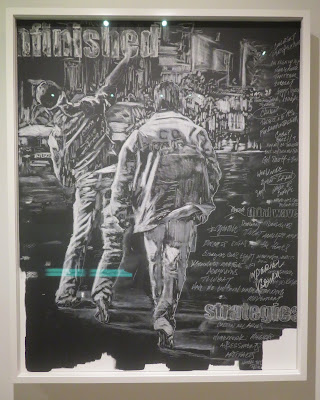 On the new wing's second floor are a series of three galleries of American art. The largest of the three is dedicated to American contempor- ary and modern art after 1960. You will find a handful of works by some important, easily recognizable artists, and what I like even more are the artist I did not know. It's an eclectic mix of staples, avant garde and visionary works. The later is often completely ignored by museums outside places like the American Visionary Art Museum in Baltimore.
On the new wing's second floor are a series of three galleries of American art. The largest of the three is dedicated to American contempor- ary and modern art after 1960. You will find a handful of works by some important, easily recognizable artists, and what I like even more are the artist I did not know. It's an eclectic mix of staples, avant garde and visionary works. The later is often completely ignored by museums outside places like the American Visionary Art Museum in Baltimore.
Among artist you would most likely recognize is an interesting sculpture by George Segal. More than a plaster cast of the human form in common clothes, this one includes a backdrop with a light element. Not something that I've ever seen before in his works.
Here you can see a sculpture by Anne Truitt and directly behind it is a Jim Dine "Heart" painting.
Another is a horse sculpture by Deborah Butterfield. She has spent a lifetime taking found objects, both natural (wood, driftwood) and man-made (scraps of metal) and turning them into dynamic, elegant, even graceful representations of horses. Years ago now I had the good fortune of attending a guest artist dinner and lecture at the Phillips Collection art museum here in Washington, DC were she presided and presented a post diner lecture on her work, techniques and inspirations. One particularly fascinating take away was about the sculptures made from found wood. Although the original pieces are made form actual wood, the completed sculpture is a bronze cast of the original that is then treated to retain the appearance of natural wood. The point being to ensure the work's durability and longevity. It was a fascinating evening. The work in the Delaware art museum is made of found metals.
"unfinished business 'it may not be televised'" 2012




No comments:
Post a Comment